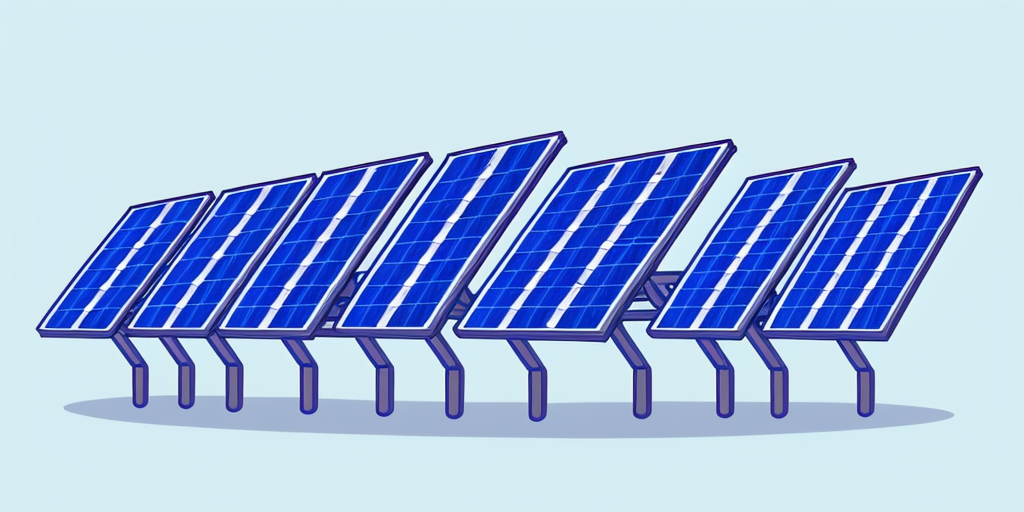Going solar seems like a great idea at first, but then we look at our wallets and wonder, “Why are solar panels so expensive?” It’s as if we’re stuck in a war between Mother Earth and our bank accounts. The truth is that the high cost of solar panels is a big obstacle for many people who want to transition to renewable energy. Today, we’ll look at the elements that contribute to the high cost of solar panels and try to make sense of this solar-powered tug of war. We’ll look at the material costs, the production process, and the installation and maintenance costs. In addition, we will look at government subsidies and financial choices that can help make solar more accessible. Let’s dive in.
As usual, there isn’t a one-size-fits-all approach to defining the costs of solar panels. The cost of solar panels varies based on how much energy your home requires. In 2023, solar panel installation costs about $2 to $3 per watt on average (before incentives). That means the entire cost for a typical home requiring roughly 6 kilowatts might range from $17,430 to $23,870. But here is a silver lining: despite the high initial costs, solar panels are becoming more inexpensive. The average cost of solar panels has reduced by 70% since 2010, according to the Solar Energy Industries Association (SEIA). They reported that in 2010 the average cost of residential solar panel systems was $40,000. Today it’s $18,000. While solar panels might be costly up front, the long-term benefits of energy savings and decreased carbon footprint can make them a wise investment for households. Despite falling prices, let’s analyze why solar panels are so expensive.
Solar panels owe a significant part of their cost to the high-priced raw materials that are utilized in their construction. Some of the primary components of solar panels include:
Certain solar panels also incorporate silver, or silver-coated silicon wafers, to enhance their performance. The introduction of silver aids in elevating the efficiency of the panels, though it also contributes to a rise in manufacturing costs.
Both silicon and lithium are mined from the earth, which requires substantial energy, labor, and equipment. The mining process can also have significant environmental impacts, including water pollution and habitat destruction, which can increase regulatory scrutiny and costs. After mining, these materials have to undergo a series of complicated and energy-intensive purification processes to be suitable for use in solar panels or batteries.
The interplay between supply and demand is a major factor influencing the cost of solar panels. As global awareness about the importance of renewable energy grows, the demand for solar panels has escalated, driving a surge in installations across the globe. This high demand, however, sometimes surpasses the available supply, thereby putting upward pressure on solar panel prices.
These market dynamics are also affected by global trade policies and tariffs. Given that a significant portion of the raw materials for solar panels comes from China, trade relations between China and other countries can significantly impact the price of these panels. For example, tariffs imposed on Chinese goods, or anti-dumping measures taken against Chinese manufacturers, can lead to higher costs for these raw materials and consequently, for solar panels. In addition, the cost of the essential components of solar panels, such as high-quality silicon, silver, and other metals, are subject to market volatility. Price fluctuations in these raw materials can directly impact the cost of solar panels.
The choice of solar panel can also have a substantial impact on the entire cost of a solar energy system. Solar panels are classified into three types: monocrystalline, polycrystalline, and thin-film. Each variety has its own set of benefits and drawbacks, which might alter the price.

Monocrystalline solar panels: The term “mono” in monocrystalline indicates the use of a single silicon crystal in the manufacturing process. Because of its single-crystal silicon structure, monocrystalline solar panels ($1 to $1.50 per Watt) are noted for their high efficiency and sleek appearance. They are the most efficient solar panels, able to generate more electricity per square foot than other types of panels. But they’re also the most expensive, due to the use of high-quality materials and the complex production process.
Polycrystalline solar panels: on the other hand, polycrystalline solar panels ($0.70 to $1 per Watt) are built from various silicon crystals and have a slightly lower efficiency than monocrystalline panels. On the plus side, they are less expensive because they are manufactured using silicon cells of inferior quality, including those that are recycled from the production process of monocrystalline panels. These cost-saving measures result in reduced expenses, making them a popular alternative for households seeking a mix of cost and performance.
Thin-film solar panels: Thin-film solar panels ($1 to $1.50 per Watt), unlike their monocrystalline and polycrystalline counterparts, utilize diverse materials but they also have the lowest efficiency. A thin coating of photovoltaic material is deposited onto a substrate, such as glass or metal, to create these panels. The most common type employs cadmium telluride (CdTe), layered between conductive layers to capture sunlight. Another variant uses amorphous silicon (a-Si), featuring non-crystalline silicon on substrates like glass or plastic. The last type incorporates Copper Indium Gallium Selenide (CIGS), sandwiched between two conductive layers with electrodes for current capture.
Solar panel installation necessitates expert labor and specialized equipment, which can raise the entire cost. Mounting the panels, connecting them to an inverter, and integrating the system with the existing electrical grid are all part of the installation procedure. This time-consuming operation, according to Market Watch, accounts for over 12% of the cost, ranging between $1,000 to $3,000. The installation process also involves an electrician who installs the sub-panel, contributing to the overall cost. The services of an electrician could either be included with the solar panel installation company’s team or might need to be hired separately, costing anywhere from $100 to $500.

Obtaining licenses and passing inspections are critical steps in the installation process, and they can also add to the cost of solar panels. Permits are frequently required by local legislation and building codes, and the cost varies based on the locality. In addition, qualified personnel are usually required to inspect the system to ensure that it is correctly installed and fulfills safety regulations. In general, each solar panel installation is unique, and some may necessitate further modification or site preparation to achieve peak performance. Tree trimming, roof repair, and the installation of support structures are examples of such services. These extra jobs can raise the total cost of the installation process.
Although solar panels require little care, they do require cleaning and inspection on a regular basis to ensure top performance (usually from two to four times per year). Dirt, dust, and debris can build up on the panels and reduce their effectiveness. Regular maintenance, costing from $140 to $180, or $280 to $720 each year. can also assist in identifying possible concerns, such as damaged panels or wiring, before they become major issues.
Inverters, which transform the direct current (DC) generated by solar panels into alternating current (AC) for use in your home, often last less than the panels themselves. Just think about how solar panel warranties usually cover 25 years, whereas inverter warranties tend to be shorter. When considering the long-term costs of a solar panel installation, homeowners should factor in inverter replacement.
While solar panels can initially appear costly, there are effective strategies to save money and make them more affordable. By implementing the following tips, you can significantly reduce the overall cost of your solar panel system, making it a financially viable investment in the long run.
Governments all over the world provide various tax breaks and incentives to encourage the use of solar energy. For example, in the United States, the federal solar tax credit allows homeowners to deduct 30% of the cost of their solar panel installation from their federal income taxes. Local and state rebates may also be available, lowering the overall cost of solar panels. To make solar energy more cheap, it is critical to research and take advantage of these advantages.

Solar panels can be a significant investment, but a range of financial strategies can help make this clean energy option more affordable. If paying upfront is not feasible, a number of loan options are available. For instance, personal loans are unsecured, meaning there’s no risk of losing assets. They come with short repayment terms and quick funding, ideal for those eager to install solar panels promptly. Another feasible approach is through home equity financing. It has the advantage of lower interest rates and tax benefits, although the repayment period is longer. Here, it’s crucial to bear in mind that your home serves as collateral for the loan.
If home equity financing is not accessible or appealing, an FHA 203(k) loan may be an attractive alternative. This option folds the solar panel project’s cost into a new or existing mortgage, often offering lower interest rates than personal loans, although it entails FHA mortgage insurance. For those seeking a more streamlined process, some solar panel installation companies provide contractor financing. This offers the ease of having the project financed and installed by the same entity, although it often involves long repayment terms. There’s also an opportunity to benefit from solar panels without having to own them. Solar leases and power purchase agreements (PPAs) offer access to solar-generated electricity often at a reduced cost, without the commitment of ownership. Finally, financial assistance is available from federal, state, and local governments. Federal tax credits can significantly decrease the net cost of solar panels. Local rebates can also provide financial support for homeowners who decide to make the switch to solar power.
Take the time to explore different solar panel manufacturers and solar panel installation companies to find the most competitive prices. By comparing multiple options, you can identify cost-effective solutions that meet your energy needs without compromising on quality. When selecting an installer for your solar panel system, it is crucial to choose a reputable company that provides comprehensive warranties, including solar panel warranty and workmanship warranty. Opting for installers with a proven track record and a roof warranty ensures the quality of your solar system installation. By having these warranties in place, you can avoid additional expenses associated with maintenance and repairs caused by subpar workmanship, leading to further cost savings in the long term.
DIY solar panel installation might be a cost-effective option for people who have the requisite knowledge and tools. This solution, however, comes with its own set of obstacles and concerns, including the requirement for electrical competence and the risk of voiding warranties. Before commencing on a DIY solar panel installation project, it is critical to carefully assess the pros and cons. Furthermore, local restrictions and permits may still apply, and DIY installers should be prepared to meet all criteria to ensure a safe and legal installation.
Don’t fret: constant improvements in efficiency and manufacturing processes brought about by new technologies have a major effect on the price of solar panels. Here are a few emerging technologies that could decrease the cost of solar panels.
Perovskite solar cells are one of the most promising developing technologies in the solar industry. These cells have the potential to transform solar panel manufacturing by providing a lower-cost, more efficient alternative to existing silicon-based solar cells. Researchers have achieved substantial advances in enhancing the efficiency and stability of perovskite solar cells, which could lead to commercialization and widespread usage in the near future. As this technology evolves, it has the potential to drastically cut the cost of solar panels, making them more affordable to a larger range of people.
Another new technology that has the potential to alter solar panel costs is bifacial solar panels. Because these panels can generate power from both the front and rear sides, they can capture more sunlight and create more energy than typical solar panels. Bifacial panels may be more expensive in the beginning, but their enhanced efficiency can result in more energy production and perhaps reduced long-term expenditures. As manufacturers perfect bifacial panel designs and manufacturing methods, their costs may fall, making them a more appealing option for homes.
As the solar business expands, the demand for long-term end-of-life solutions for solar panels develops. Solar panel recycling is a new field that seeks to recover valuable materials from discarded panels in order to reduce waste and the demand for new raw materials. As solar panel recycling technology and processes evolve, they may contribute to lower overall solar panel production costs by offering a more sustainable source of resources.

Solar paint is a novel idea that has the potential to transform the way we generate solar energy. This method employs a customized paint that contains light-sensitive nanoparticles capable of absorbing sunlight and converting it into electricity. Homeowners might theoretically create solar energy without the need of typical solar panels by simply painting a surface, such as the exterior walls of a building or the roof of a house.
Solar paint development is still in its early phases, with researchers aiming to increase its efficiency, durability, and price. If solar paint becomes economically practical, it might provide a more cost-effective and visually unobtrusive method of harnessing solar energy, making it a viable alternative to standard solar panels. However, it may take several years for this technology to become generally available and achieve efficiencies comparable to traditional solar panels.
So, why are solar panels so expensive? The cost of raw materials, manufacturing procedures, installation, and upkeep is the answer. While the initial expenditures may be intimidating, it is critical to consider the long-term benefits and potential savings that solar energy can give. You can drastically lower your carbon footprint, monthly energy bills, and increase your property value by reducing or eliminating your reliance on traditional fossil-fuel energy sources. Furthermore, as solar technology advances, solar panels become more efficient and affordable with each passing year.
Taking advantage of tax credits, rebates, and financing alternatives can also assist to cover the initial expenses of installing solar panels. Many states provide rebates or tax credits to homes that install solar systems, and the federal government provides a 30% solar investment tax credit (ITC) that can greatly lower the cost of solar installation. It’s also vital to look ahead to the future of solar technology, as advances in materials and manufacturing techniques make solar panels more efficient and less expensive to create. Solar panel prices have plummeted by more than 70% in the last decade, and this trend is projected to continue.
Installing solar panels can be expensive, but there are ways to reduce that cost, such as tax credits, incentives, and financing alternatives.
Solar panel installation has long-term benefits such as decreasing your carbon footprint, your monthly energy costs, and increase the value of your home by 4%.
Many manufacturers provide guarantees of 20 to 25 years, while the average lifespan of a solar panel is 25 to 30 years.
Stay a while and read more posts like this
In recent years, Europe has witnessed a remarkable surge in the adoption of solar panels, marking a pivotal shift towards renewable energy. Data from the...
Renewable Energy, Solar Energy, Solar Energy Basics, Solar Technology
“Unlock the Truth: Get the Facts on Solar Energy!” Introduction Solar energy is becoming increasingly popular as a renewable energy source, but there are...
Imagine a world where you’re able to cut your monthly energy expenditure substantially. A reality where your home isn’t reliant on finite,...